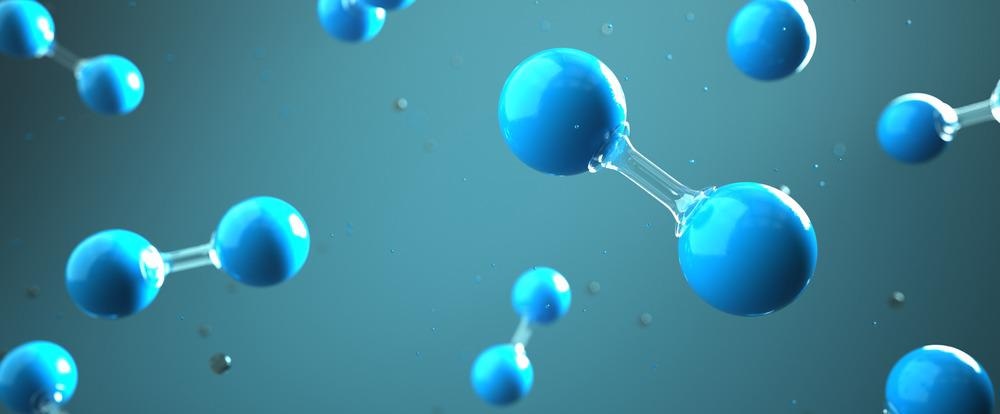In a study published recently in the journal Sensors and Actuators B: Chemical, the extremely quick hydrogen (H2) sensing activity of Pd-embellished sodium titanate nanoribbons (Pd-NTO NRs) has been described as a breakthrough finding.

Study: Ti3C2 MXene-derived sodium titanate nanoribbons for conductometric hydrogen gas sensors. Image Credit: Alexander Limbach/Shutterstock.com
Inadequacy of Current Safety Hydrogen Sensors
Owing to its distinctive qualities of high heat of combustion, environmentally friendly footprint, and abundant reservoirs H2 gas is regarded as the future of energy generation. Nonetheless, the use of H2 energy in contemporary power production systems is hampered by its combustibility, necessitating the employment of highly effective detectors to minimize any hazards associated with H2 gas leaks.
The US Department of Energy (DOE) has established a bunch of benchmark performance parameters for H2 safety sensors, which mandate the H2 sensors to operate at ambient temperature with a sensing area of 0.1–10%, a response greater than 25% at 1% H2, and a response time of 1s.
So far, only a few papers have reported quick sensing of 1% hydrogen gas with reaction times of less than 5 seconds, let alone the DOE criterion of one second. Given that response time is critical not just for safe operation but also for several other uses that necessitate live monitoring of H2 concentrations (e.g., hydrogenating and dehydrogenating processes in chemical manufacturing operations), accelerating the response time of H2 sensors is an important issue that must be tackled as soon as possible.
Nanotechnology May be the Key
Developments in material fabrication and nanomaterials have created new options for designing nanostructures with optimal architecture and surface chemical properties to increase their gas detection capability.
Stacked nanostructures, like MXenes, graphene, black phosphorus, metallic dichalcogenides (such as MoS2), and semiconductive metallic oxide nanosheets and nanoribbons (NRs), have long been an important topic. These nanomaterials have a large specific area and a large surface atomic proportion, which results in enhanced charge transport at the solid-gas junction due to the desired gaseous molecules getting adsorbed.
Creating Surface Defects for Improved Hydrogen Sensing
To improve the detection capability of such materials, several approaches have been used, such as assembling them into hierarchical and hollowed architectures to reduce agglomeration and facilitate gaseous diffusion and inserting catalytic nanoparticles (NPs) to stimulate the gaseous molecules.
In comparison to such strategies, designing surface imperfections (particularly edge spots and oxygen gaps) is seen as a highly successful and appealing approach. Surface flaws are often followed by modifications in physiochemical characteristics, which likely improve the interaction among detection substances and gaseous molecules.
Previous research has shown that surface imperfections have a significant impact on the chemo-resistive behavior of gas detectors. Despite significant efforts, the reaction time of detectors developed to date is far from satisfactory. As a result, developing a straightforward technique for further optimizing two-dimensional detection materials to accomplish extremely quick sensing of hydrogen gas remains the most difficult task.
Key Findings of the Study
In this study, the extremely quick hydrogen detection capability of Pd-adorned sodium titanate (Pd-NTO) nanoribbons was described. The developed substance has a number of distinct chemical and physical properties that work together to enhance the hydrogen response time.
To begin, evenly adorned monodispersed Pd nanoparticles were placed onto the NTO nanoribbons, which serve as active spots for fast hydrogen adsorption and breakdown. Furthermore, in contrast to their equivalents like nanotubes (NTs), NTO nanoribbons inherently have a significant number of active O2 gaps on the edge areas to engage with dissociated hydrogen atoms. Moreover, the produced NTO nanoribbons have a horizontally parallel shape, which provided an excellent open path feature for rapid gas passage over the whole sensing region.
Finally, stacked NTO nanoribbons may arrange themselves into 3D hierarchical urchin-shaped microstructures, which not just prevents nanoribbon aggregating but also alters the functional cross-sectional area in-between the nanoribbons, improving charge transportation and sensory capability.
With all these features, the fabricated Pd-NTO nanoribbons exhibited an extremely quick response to 1 % H2 within 1.1 seconds at ambient temperature, outperforming the most advanced electrical hydrogen detectors. This research sheds fresh light on the designing and fabrication of detection materials for rapid hydrogen sensing using rational morphology manipulation and surface chemistry engineering.
Reference
Wu, J., Guo, Y., Wang, Y., Zhu, H., & Zhang, X. (2022). Ti3C2 MXene-derived sodium titanate nanoribbons for conductometric hydrogen gas sensors. Sensors and Actuators B: Chemical, 361. Available at: https://www.sciencedirect.com/science/article/pii/S0924424722001455?via%3Dihub
Disclaimer: The views expressed here are those of the author expressed in their private capacity and do not necessarily represent the views of AZoM.com Limited T/A AZoNetwork the owner and operator of this website. This disclaimer forms part of the Terms and conditions of use of this website.